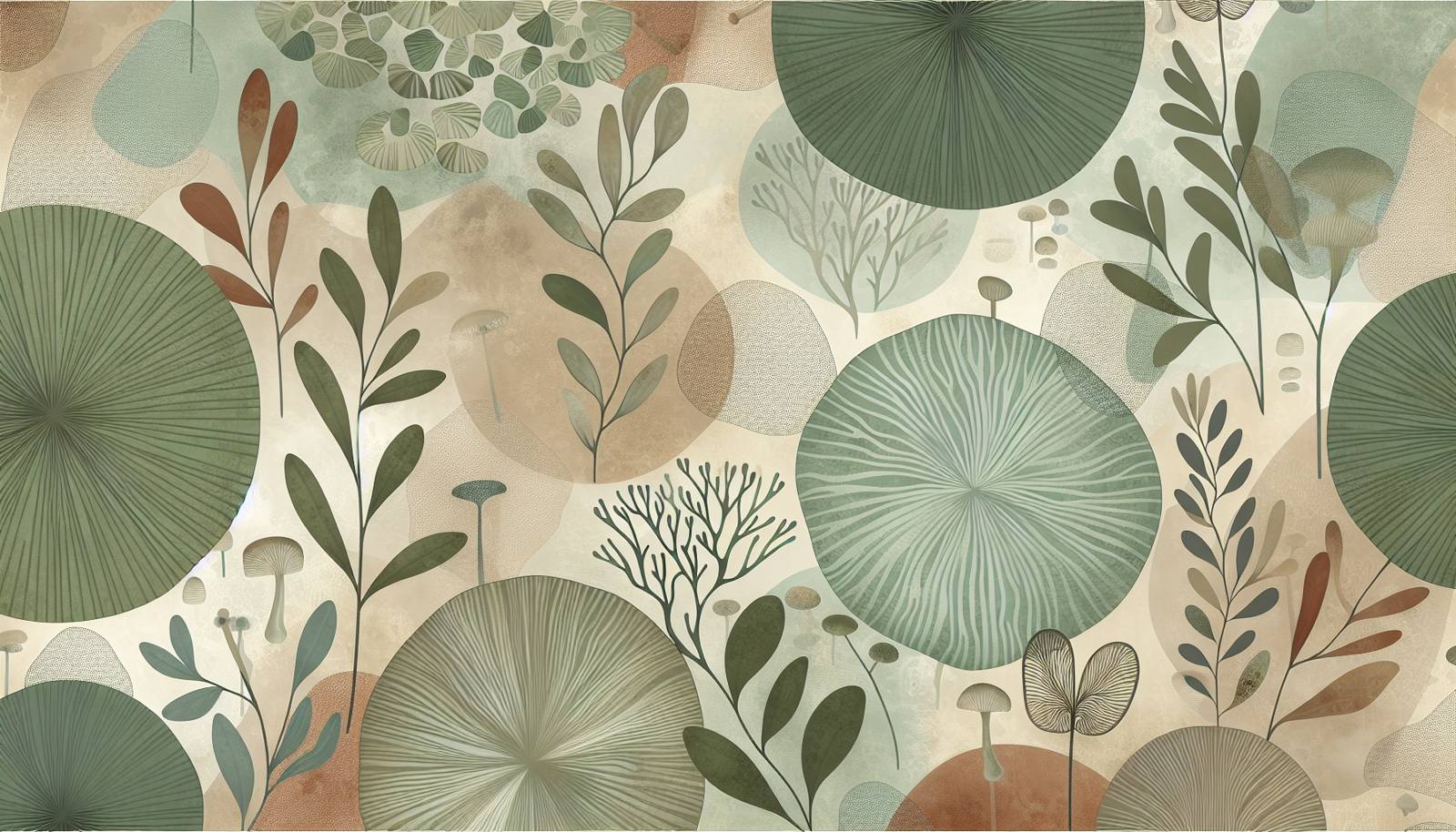
FAQ About Indoor Plant Antifungal Strategies

What are common signs of fungal infections in indoor plants?
Common signs of fungal infections in indoor plants include yellowing or browning of leaves, black or white spots on leaves, a powdery substance on leaves or stems, wilting, and root rot. The appearance of mold or mildew on the soil surface can also indicate a fungal problem. These symptoms often lead to weakening or stunted growth of the plant.

How can I naturally prevent fungal infections in my indoor plants?
Preventing fungal infections naturally involves ensuring proper air circulation, avoiding overwatering, and maintaining appropriate humidity levels. Place plants in locations with good light, and avoid overcrowding. Regularly clean leaves with a damp cloth. Using a well-draining soil mix and pots with drainage holes also helps in preventing waterlogged conditions conducive to fungal growth.

Can baking soda be used as an antifungal treatment for indoor plants?
Baking soda can be an effective antifungal treatment for indoor plants. It works by creating an alkaline environment on the leaf surface that is inhospitable to fungi. A common mixture involves dissolving one teaspoon of baking soda in a quart of water, adding a few drops of dish soap to help it adhere to leaves, and spraying it on plants. Regular application may help control mild fungal infections.

What role does humidity play in indoor plant fungal infections?
Humidity plays a significant role in the development of fungal infections in indoor plants. High humidity levels can create an ideal environment for fungi to thrive, as they generally prefer damp, warm conditions. To minimize the risk, manage humidity by using dehumidifiers or ensuring good airflow around the plants. Conversely, some plants may benefit from moderate humidity, so striking the right balance is crucial.

Is neem oil effective against indoor plant fungi?
Neem oil is a popular organic fungicide used to treat fungal infections in indoor plants. It disrupts the life cycle of fungi, preventing further growth and spread. When used as directed, neem oil is safe for indoor plants and can also help control other pests. Mix neem oil with water according to the product instructions and spray it onto affected plants for effective treatment.

Are there any indoor plants that are naturally resistant to fungi?
Some indoor plants display higher resistance to fungal infections compared to others. Snake plants (Sansevieria), peace lilies (Spathiphyllum), and rubber plants (Ficus elastica) are examples of indoor plants that are generally resistant to many fungal diseases due to their hardy nature and adaptability to indoor conditions. Choosing such plants can reduce the risk of fungal problems.

How can I improve air circulation to prevent fungal growth on indoor plants?
Improving air circulation around indoor plants can help in preventing fungal growth. This can be achieved by spacing plants adequately, using an oscillating fan, or keeping windows open to allow fresh air to circulate. Good air movement helps to keep leaves dry and reduces the humidity around plants, making it less conducive for fungi to thrive.

What is the best way to water indoor plants to avoid fungal infections?
To avoid fungal infections, it's best to water indoor plants in the morning, ensuring excess water can evaporate throughout the day. Use room-temperature water, and always water the base of the plant rather than wetting the foliage. Ensure the soil is dry to the touch a few inches below the surface before watering again to prevent overwatering.

Can cinnamon be used as an antifungal for indoor plants?
Cinnamon has antifungal properties and can be used as a natural remedy for treating fungal infections in indoor plants. Sprinkle ground cinnamon on the affected areas of the plant or on the surface of the soil to inhibit fungal growth. Cinnamon can be particularly effective against damping-off disease in seedlings. It acts as an antimicrobial agent and can help prevent the spread of infection.

Why is it important to clean pots and tools to prevent indoor plant fungi?
Cleaning pots and tools is crucial in preventing the spread of fungi because contaminated surfaces can harbor fungal spores that infect plants. Use a mild bleach solution or rubbing alcohol to sterilize pots and tools between uses. This prevents cross-contamination and keeps your indoor plants healthy by reducing the likelihood of fungi transferring from one plant or pot to another.

What are some non-toxic antifungal sprays I can make at home?
Non-toxic antifungal sprays can easily be made at home using natural ingredients. A simple recipe includes mixing one tablespoon of apple cider vinegar in a quart of water, optionally adding a few drops of liquid soap. Another option is a garlic spray, made by blending several cloves of garlic in water and straining it before use. These solutions can be sprayed on affected plants to combat fungi.

How often should I check my indoor plants for signs of fungal infections?
It's a good practice to inspect your indoor plants for signs of fungal infections on a weekly basis. Regularly checking the leaves, stems, and soil allows for early identification and treatment of any issues. Early detection is key to successfully managing and treating fungal infections before they become severe.

Can over-fertilizing contribute to fungal diseases in indoor plants?
Over-fertilizing can indeed contribute to fungal diseases in indoor plants. Excess nutrients, particularly nitrogen, can promote lush, tender growth that is more susceptible to fungal infections. It can also lead to salt buildup in the soil, impairing root function and making the plant more vulnerable to root rot and other fungal problems. Follow recommended fertilization guidelines to avoid these issues.

Does indoor lighting affect the susceptibility of plants to fungal infections?
Indoor lighting does affect the susceptibility of plants to fungal infections. Plants that receive adequate light are typically healthier and more resistant to fungal diseases. Insufficient light can weaken plants and increase humidity levels, creating conditions favorable for fungal growth. It's important to provide the right amount of light, appropriate to each plant species, to minimize the risk of infection.

How should I dispose of infected plant material to prevent spreading fungi?
To prevent spreading fungi, infected plant material should be disposed of carefully. Remove affected leaves and stems and seal them in a plastic bag before discarding in the trash. Do not compost infected material, as this can spread fungal spores to other plants. Cleaning up fallen plant debris regularly is also important to prevent the spread of pathogens.

Can hydrogen peroxide be used to treat soil-borne fungal infections?
Hydrogen peroxide can be used to treat soil-borne fungal infections. It works by releasing oxygen that breaks down harmful pathogens in the soil. To use, mix one part hydrogen peroxide with three parts water and apply it to the soil around the plant. This treatment helps eliminate fungi and can improve soil aeration, benefiting root health.

What can be done about fungal infections that keep returning?
If fungal infections keep returning, it's important to evaluate and adjust the growing conditions. Ensure proper drainage, avoid overwatering, and improve air circulation. It may also be necessary to sanitize pots and tools, treat plants with fungicides, or repot the plant using fresh soil. Persistent problems may require changing the plant's location or reducing humidity levels around it.

Do all indoor plants require the same treatment for fungal infections?
Not all indoor plants require the same treatment for fungal infections, as different species have varying susceptibilities and care needs. It's important to tailor treatments to the specific plant and type of fungal infection. Consult care guides or plant-specific resources to determine the best approach for treating fungi on particular indoor plants.

How important is soil management in preventing fungal infections in indoor plants?
Soil management is crucial in preventing fungal infections. Using a well-drained potting mix and ensuring pots have drainage holes helps prevent water retention, reducing the risk of root rot and soil-borne fungi. Regularly examine the soil for signs of mold or other changes, and replace it when necessary to maintain a healthy growing environment.

Are there any commercial antifungal products safe for indoor plant use?
Yes, there are several commercial antifungal products that are safe for indoor plant use, often labeled as organic or non-toxic. Products containing sulfur, copper-based fungicides, or those based on biological controls like Bacillus subtilis are options. Always read labels and follow instructions carefully to ensure safety and efficacy.
